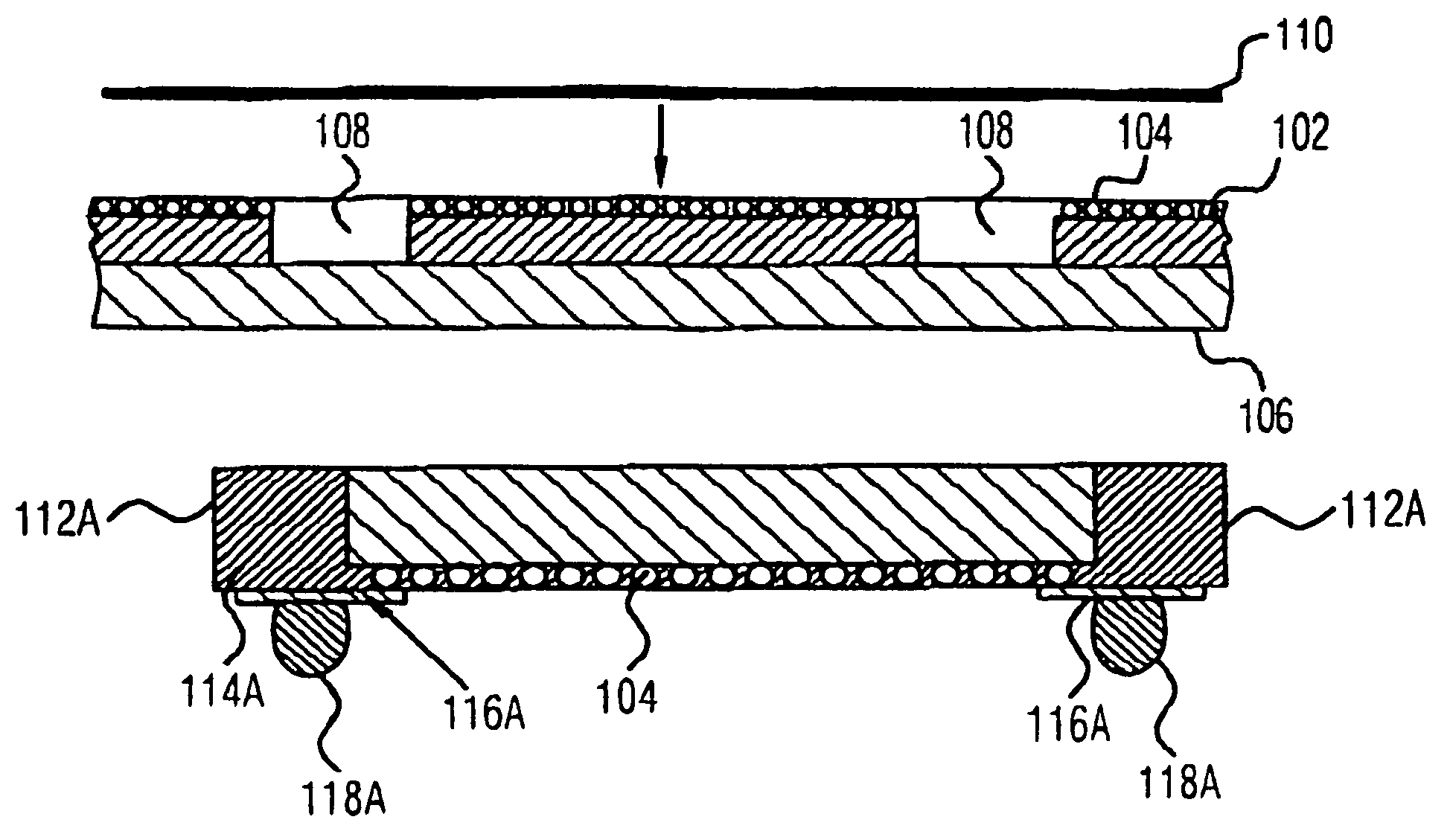Method for producing encapsulated chips
a technology of encapsulated chips and encapsulated chips, which is applied in the manufacturing of semiconductor/solid-state devices, solid-state devices, electric devices, etc., can solve the problems of preventing rapid introduction, requiring additional cost, and unable to build a system in packages in miniaturized implementation, so as to facilitate the stacking of several encapsulated chips on top of each other
- Summary
- Abstract
- Description
- Claims
- Application Information
AI Technical Summary
Benefits of technology
Problems solved by technology
Method used
Image
Examples
Embodiment Construction
[0047]In the following, with reference to FIGS. 3a–c and FIGS. 4a–f, a first embodiment of a single-stage wafer-level encapsulation according to the present invention is explained, which also allows to process hybrid systems constructed on wafer level, which may include different chip types, mechanical functional units, MEMS, or MOEMS. FIGS. 3a–c show various phases during dicing a wafer 100, and FIGS. 4a–f show various phases during encapsulation by means of injection molding. In the various figures of the following embodiments, similar elements are provided with similar reference numerals, respectively.
[0048]FIG. 3a shows a wafer 100 that has been prepared so that it includes a plurality of chips 102. The chips 102 include functional units, such as integrated circuits, sensors or sensor structures, mechanical or optical functional units, such as MEMS (micro-electromechanical systems) or MOEMS (micro-optical-electromechanical structures), which are arranged on a surface 100a, for e...
PUM
 Login to View More
Login to View More Abstract
Description
Claims
Application Information
 Login to View More
Login to View More - R&D
- Intellectual Property
- Life Sciences
- Materials
- Tech Scout
- Unparalleled Data Quality
- Higher Quality Content
- 60% Fewer Hallucinations
Browse by: Latest US Patents, China's latest patents, Technical Efficacy Thesaurus, Application Domain, Technology Topic, Popular Technical Reports.
© 2025 PatSnap. All rights reserved.Legal|Privacy policy|Modern Slavery Act Transparency Statement|Sitemap|About US| Contact US: help@patsnap.com



